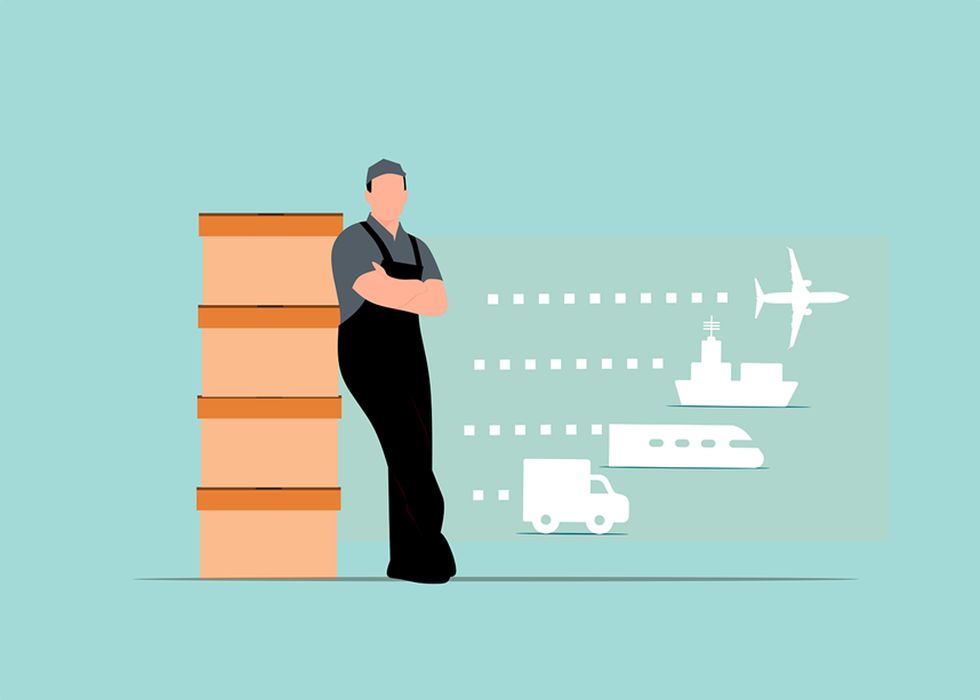
Charles R. Goulding and Preeti Sulibhavi discuss how strategic stockpiling and 3D printing can address critical shortages, highlighting lessons from recent U.S. supply chain disruptions.
The U.S. has confronted three crucial product shortages in recent years, which begs the question – have we learned anything? The three shortages include personal protective equipment (PPE), defense weapons and munitions, and oil in the strategic reserve. A review of how these shortages occurred and were addressed provides insights into how we can be better prepared for the future.
PPE Shortages
When the COVID-19 pandemic hit, the demand for PPE like N95 masks, gowns, and gloves skyrocketed. Much of PPE was imported from China in normal times and so when COVID-19 struck the U.S., companies couldn’t rapidly scale up production. With global supply chains disrupted, healthcare workers and the U.S. population in general were put at risk with inadequate PPE supplies.
3D printing technology emerged to fill many of these shortfalls. Companies like HP, Carbon, and Markforged used 3D printing to pivot their manufacturing and produce PPE. HP partnered with organizations like Premium Protective Wear to 3D print millions of parts for face shields. Carbon upscaled production of nasal swabs, printing over 1 million swabs per week for COVID-19 testing. Local companies got involved too – Culver City firm Stratasys 3D printed over 150,000 face shields for local hospitals.
Just as we regularly ensure fire safety equipment is in working order, we must do the same for PPE. The COVID-19 pandemic has shown we can’t rely solely on just-in-time supply chains and offshore production. Federal and state governments can mandate minimum PPE stockpile levels and maintain domestic 3D printing and manufacturing capacity on standby to ramp up production when shortages arise.
Weapons and Munitions Shortages
When the wars in Iraq and Afghanistan began after 9/11, the U.S. military was caught unprepared without sufficient stockpiles of conventional weaponry and munitions. There were virtually no safety stocks of long-lead capital equipment like tanks, howitzers, and ammunition. Ramping up production took over a year in some cases, leaving forces underequipped.
The ongoing war in Ukraine has exacerbated these shortfalls. In June 2022, the Army reported needing up to 5 years to rebuild stocks of some munitions like artillery rounds, with factories running 24/7 unable to meet demand. Maintaining healthy stockpiles and domestic production capacity is crucial for national defense readiness. The government and defense industry partners need better long-term planning to avoid depletion, by funding minimum stockpile levels and necessary procurement.
Strategic Oil Reserves
The Strategic Petroleum Reserve (SPR) maintains emergency crude oil stocks underground in Louisiana and Texas. This reserve helps stabilize markets during supply disruptions. However, the Biden administration has drained the SPR to historic lows, tapping it to control rising gas prices.
Refilling the reserve will be challenging and expensive with current high oil prices. Domestic oil and gas companies increasingly use 3D printing to enable optimized and resilient operations. For example, ExxonMobil employs 3D printing to construct structural components for offshore oil platforms. The MakerBot METHOD X prints 3D jigs, fixtures, and tools for field operations.
Shell and BP are two other household names in the industry that have been integrating 3D printing technology as well. BP has incorporated 3D printing for years as they utilize it to manufacture components and to go straight from concepts to physical models when bringing ideas to life. Shell operates in a similar manner, as they utilize 3D printing to print spare parts on demand, develop novel equipment, and rapidly prototype engineering designs.
Relying more on additive manufacturing reduces lead times and costs. The oil and gas industry provides a model of how 3D printing can make supply chains more resilient. Rebuilding SPR levels may require further incentivizing domestic production.
The Research & Development Tax Credit
The now permanent Research & Development Tax Credit (R&D) Tax Credit is available for companies developing new or improved products, processes and/ or software.
3D printing can help boost a company’s R&D Tax Credits. Wages for technical employees creating, testing and revising 3D printed prototypes can be included as a percentage of eligible time spent for the R&D Tax Credit. Similarly, when used as a method of improving a process, time spent integrating 3D printing hardware and software counts as an eligible activity. Lastly, when used for modeling and preproduction, the costs of filaments consumed during the development process may also be recovered.
Whether it is used for creating and testing prototypes or for final production, 3D printing is a great indicator that R&D Credit eligible activities are taking place. Companies implementing this technology at any point should consider taking advantage of R&D Tax Credits
Conclusion
Recent shortages illuminate vulnerabilities in U.S. supply chains. While 3D printing provides agile solutions, more systemic resilience is needed. The government can mandate safety stocks for crucial products and maintain domestic standby production capacity via advanced manufacturing. Business and government should increase domestic sourcing, onshoring, and stockpiling for national security priorities. With better contingency planning, America can be better prepared when the next crisis emerges.
